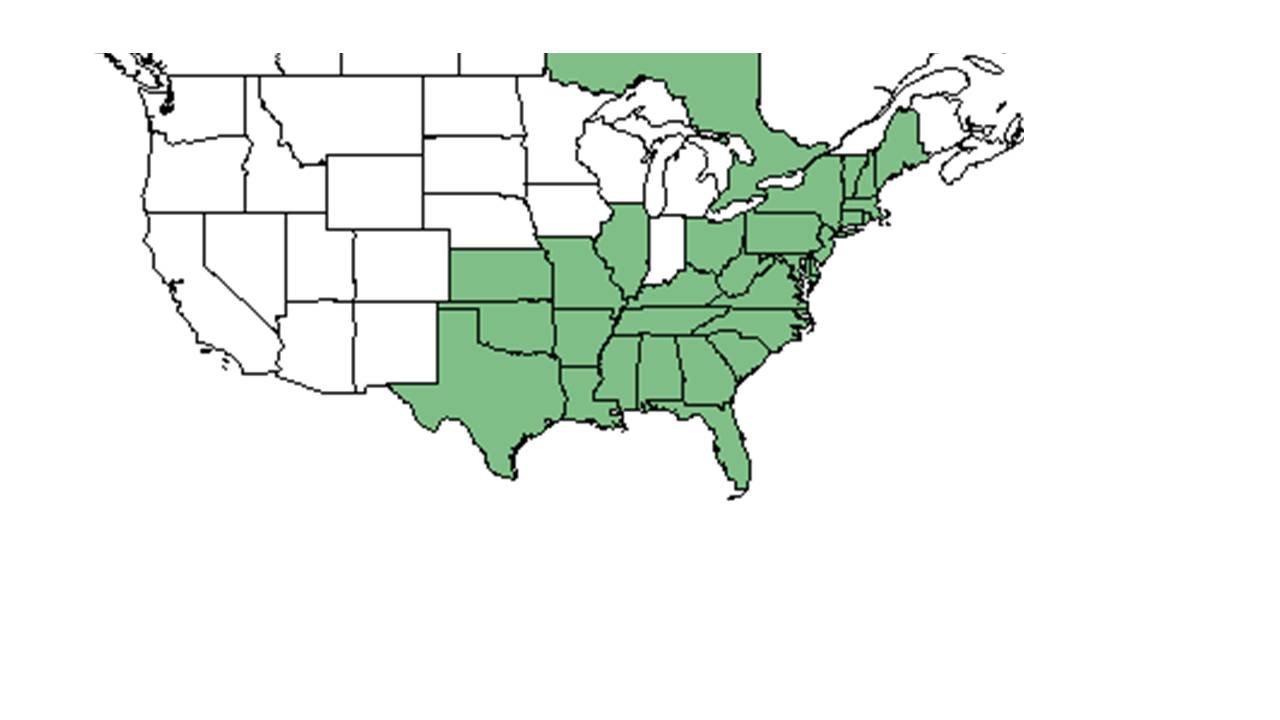Sorghastrum elliottii
| Sorghastrum elliottii | |
|---|---|
Error creating thumbnail: Unable to save thumbnail to destination
| |
| Photo taken by Gil Nelson | |
| Scientific classification | |
| Kingdom: | Plantae |
| Division: | Magnoliophyta – Flowering plants |
| Class: | Liliopsida – Monocotyledons |
| Order: | Cyperales |
| Family: | Poaceae ⁄ Gramineae |
| Genus: | Sorghastrum |
| Species: | S. elliottii |
| Binomial name | |
| Sorghastrum elliottii (C. Mohr) Nash | |

| |
| Natural range of Sorghastrum elliottii from USDA NRCS Plants Database. | |
Common name: Slender Indiangrass
Contents
Taxonomic notes
Description
"Coarse perennials from rhizomes or hardened bases. Leaves mostly low cauline; blades usually scaberulous; sheaths usually glabrous, margins scarious; ligules membranous to cartilaginous. Panicle elongate; rachis smooth; branches ascending; peduncles 1-20 mm long. Spikelets in pairs, fertile long-ovoid, 5-8 mm long excluding awns, sessile or subsessile, sterile or absent, with long hirsute pedicel, 3-8 mm long; terminal spikelets in 1-3 jointed racemes subtended by 2 subequal sterile pedicels. Glumes cartilaginous, subequal, 1st usually densely hirsute, 2nd glabrous or ciliate; fertile and sterile lemmas thin, hyaline, subequal, fertile lemma awned; palea absent. Grain reddish, flat, ellipsoid to obovoid, 2.5-3 mm long." - Radford et al 1964
"Tufted perennial; culms 0.4-2 m tall, nodes and internodes glabrous. Blades to 6 dm long and 10 mm wide; ligules truncate, 1-4 mm long. Panicle 0.5-3 dm long, 0.2-1.5 dm broad; rachis purplish, smooth, pedicels hirsute apically. Glumes brownish, 5-8 mm long, 1st glume truncate, 2nd glume acute or cuspidate; lemmas 2.5-4 mm long, awns brownish, twisted, geniculate, usually 2.5-3.5 cm long." - Radford et al 1964
Distribution
Ecology
Habitat
In the Coastal Plain in Florida and Georgia, S. elliottii has been found in sandy loam of an open slash-pine woodland; wooded ridge; upland, open pine-oak woodland; turkey oak/ longleaf pine scrub; scrub oak sand ridge; annually burned upland pine community; edge of limestone opening; open wiregrass flat in low longleaf pineland; burned upland longleaf pine; annually burned savanna; and on the edge of a limestone glade under Juniperus virginiana (FSU Herbarium). It has been found in disturbed habitats such as camping areas, upland mixed woodland clearings, sand between marshy area and highway, sandy loam field track, sandy soils between pine plantation and highway, and woodland trails. Soil types include loamy sand and sandy loam (FSU Herbarium). Associated species include Pinus echinata, Pinus elliottii, Pinus palustris, Quercus laevis, Quercus ilicifolia, Aristida stricta, and Juniperus virginiana (FSU Herbarium).
Phenology
It has been observed flowering and fruiting September through November (FSU Herbarium).
Conservation and management
Cultivation and restoration
Photo Gallery
References and notes
Florida State University Robert K. Godfrey Herbarium database. URL: http://herbarium.bio.fsu.edu. Last accessed: July 2015. Collectors: Robert K. Godfrey, Loran C. Anderson, K. Craddock Burks, Richard D. Houk, A. F. Clewell, Ann F. Johnson, Wilson Baker, R. A. Norris, D. C. Hunt, R. Komarek. States and Counties: Florida: Bay, Franklin, Gadsden, Jackson, Jefferson, Leon, Liberty, Okaloosa, Santa Rosa, Wakulla. Georgia: Grady, Thomas. Compiled by Tall Timbers Research Station and Land Conservancy.
Radford, Albert E., Harry E. Ahles, and C. Ritchie Bell. Manual of the Vascular Flora of the Carolinas. 1964, 1968. The University of North Carolina Press. 166. Print.